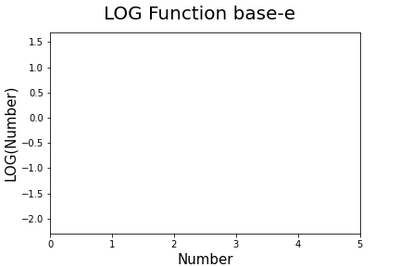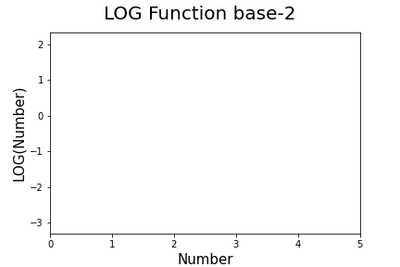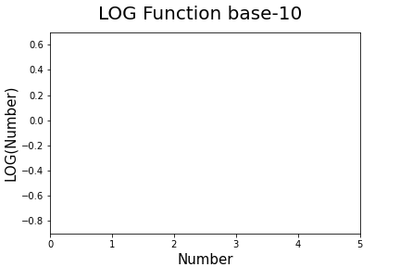Documentation/Calc Functions/LOG
Appearance
Outdated translations are marked like this.
TDF LibreOffice Document Liberation Project Community Blogs Weblate Nextcloud Redmine Ask LibreOffice Donate
LOG
Kategori:
Matematisk
Resume:
Returnerer logaritmen af et tal til den specificerede base.
Syntaks:
LOG(Number [; Base])
Returnerer:
Returnerer et reelt tal, som er den logaritmiske værdi af tallet for basen.
Argumenter:
Tallet er den positive, reelle værdi eller en reference til en celle, der indeholder det tal, hvis logaritme skal beregnes.
Base (valgfri) er den positive reelle værdi eller en reference til cellen, der er base for logaritme-beregningen. Hvis den er udeladt, antages base 10.
- Hvis ét af argumenterne er negativt eller 0, returnerer funktionen en fejlværdi.
- If either Number or Base is less than or equal to 0, then LOG reports an invalid argument error (Fejl:502).
- If Base is equal to 1, then LOG reports an invalid argument error (Fejl:502).
Yderligere oplysninger:
- GIFerne herunder illustrerer logaritme-funktionen for base e, base 2 og base 10:



[math]\displaystyle{ \text{log}_b(x)~=~\frac{\text{log}_d(x)}{\text{log}_d(b)} }[/math]
- This formula is valid for positive real numbers x, b, and d, such that neither b nor d is equal to 1.
- The figure below illustrates the LOG function when Base is set to 2 (known as binary logarithms).

LOG base-2 - See LN for the corresponding illustration when Base is set to the mathematical constant e (natural logarithms).
- See LOG10 for the corresponding illustration when Base is set to 10 (common logarithms).
Eksempler:
| Formel | Beskrivelse | Returnerer |
|---|---|---|
| =LOG(3,5; 5) | Here the function returns the logarithm to base 5 of 3.5. | 0,778385397048775 |
| =LOG(0,5; 4) | Here the function returns the logarithm to base 4 of 0.5. | −0,5 |
| =LOG(D1; D2) where cells D1 and D2 contain the numbers 1 and 9 respectively. | Here the function returns the logarithm to base 9 of 1 (the logarithm of 1 is always zero, for any base). | 0 |
| =LOG(2,5; 5,7) | Here the function returns the logarithm to base 5.7 of 2.5. | 0,526462820777384 |
| =LOG(POTENS(7; 34); 7) | Here the function returns the logarithm to base 7 of 7 raised to the power of 34, which is 34. | 34 |
| =POTENS(13; LOG(789, 13)) | Here the function returns 13 to the power of the logarithm to base 13 of 789, which is 789. | 788,999999999999 |
Beslægtede LibreOffice-funktioner:
ODF standard:
Relaterede (eller lignende) Excel-funktioner:
LOG